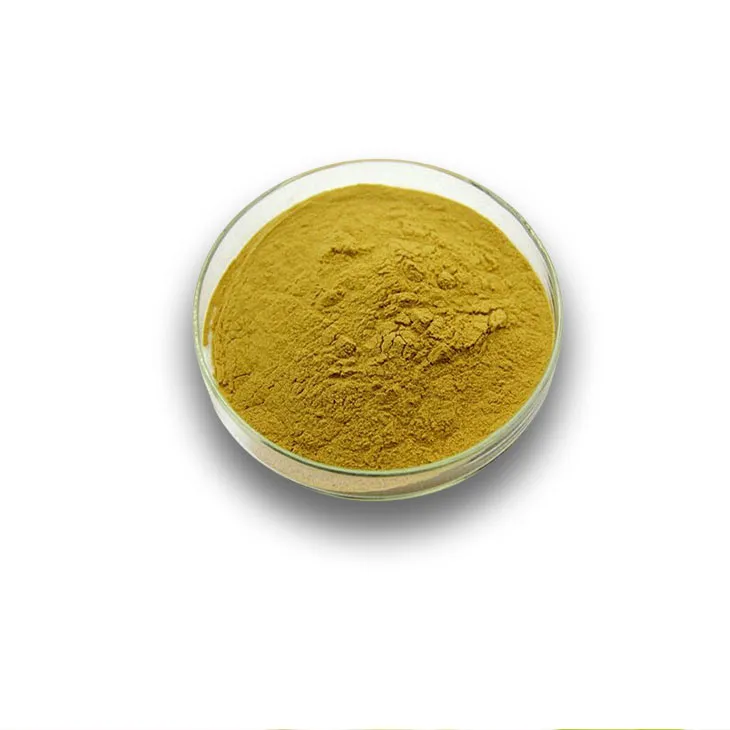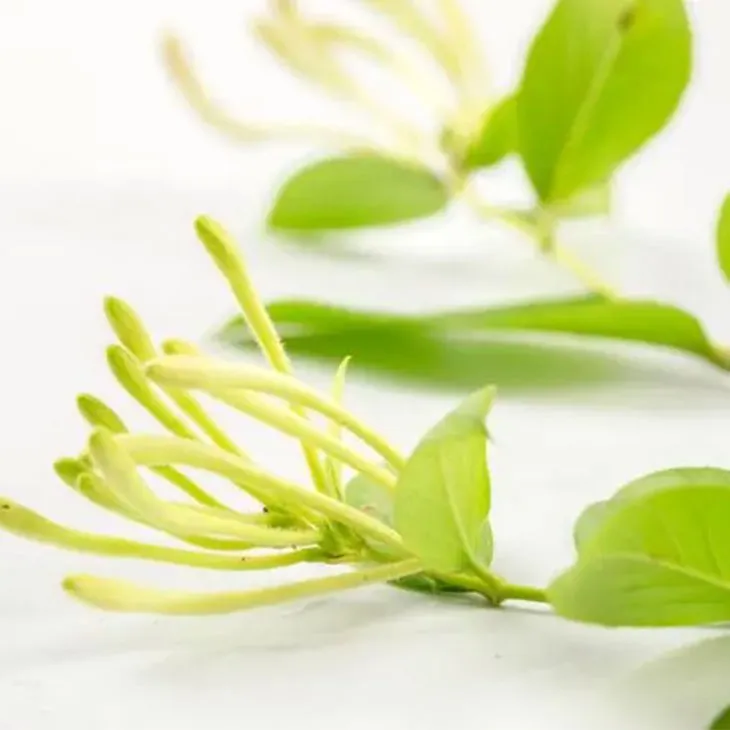- 0086-571-85302990
- sales@greenskybio.com
The Best Natural Source of Honeysuckle Pollen.
2024-11-29

Introduction
Honeysuckle Pollen is not only a rich source of nutrients but also possesses unique properties. It has been used in traditional medicine and is also of great interest in the field of apiculture as it can contribute to the production of high - quality honey. Understanding the best natural sources of Honeysuckle Pollen is crucial for those interested in harvesting it, either for personal use or on a larger scale. In this article, we will explore different geographical areas where the most productive honeysuckle for pollen grows and the ideal times of the year for pollen collection.

Geographical Areas with Ideal Honeysuckle for Pollen
1. Temperate Regions
Temperate regions around the world are often excellent sources of Honeysuckle Pollen. In Europe, for example, the common honeysuckle (Lonicera periclymenum) is widespread. It thrives in the woodlands and hedgerows of countries such as the United Kingdom, France, and Germany. The climate in these areas, with its distinct seasons of warm summers and cool winters, provides an ideal environment for honeysuckle to grow and produce abundant pollen. The well - drained soil and moderate rainfall also contribute to the healthy growth of the plants.
In North America, the trumpet honeysuckle (Lonicera sempervirens) is a significant source of pollen. It can be found in the eastern United States, from the southern states like Florida all the way up to the mid - Atlantic states. These areas have a temperate climate with a good balance of sunlight and moisture. The honeysuckle plants often grow along forest edges, riverbanks, and in open woodlands, where they can access sufficient sunlight for photosynthesis and produce ample pollen.
2. Mountainous Areas
Mountainous regions can also be prime locations for honeysuckle pollen sources. In the Himalayas, certain species of honeysuckle grow at different altitudes. At lower to mid - altitudes, the cooler climate and relatively high humidity create favorable conditions for honeysuckle growth. The plants here are often less affected by pollutants and can produce pure and nutrient - rich pollen. The unique micro - climates in the Himalayan valleys and slopes allow for a diverse range of honeysuckle species to co - exist, each contributing to the overall pollen availability.
In the Appalachian Mountains in the United States, native honeysuckle species have adapted to the mountain environment. The cooler temperatures at higher elevations and the protection provided by the forest canopy help these plants thrive. The clean air and water sources in these mountains ensure that the honeysuckle plants are healthy and capable of producing high - quality pollen. The mountainous terrain also provides a variety of habitats, from rocky outcrops to forested slopes, where different honeysuckle species can be found.
3. Coastal Areas
Coastal areas can be unexpected but great sources of honeysuckle pollen. In some Mediterranean - type climates along the coasts, such as in parts of Italy, Spain, and Greece, certain honeysuckle species have adapted to the mild, wet winters and warm, dry summers. The sea breeze brings in moisture and helps regulate the temperature, creating a unique micro - climate for honeysuckle growth. These plants often grow near coastal scrublands or in areas where there is a mix of salt - tolerant and non - salt - tolerant vegetation.
In coastal regions of Australia, some native honeysuckle species are found. The proximity to the ocean provides a relatively stable climate with moderate humidity. The sandy or well - drained soils near the coast are suitable for these honeysuckle plants. They can be an important source of pollen for local pollinators and also potentially for human - directed pollen collection.

The Ideal Time of Year for Pollen Collection
1. Spring
Spring is a prime time for honeysuckle pollen collection in many regions. As the days get longer and the temperatures start to rise, honeysuckle plants come out of their winter dormancy. In temperate areas like Europe and North America, early to mid - spring is when the first blooms appear. For example, in the case of the common honeysuckle in Europe, the flowers start to open in April. This is when the pollen is freshly produced and is of high quality. The plants are also full of energy after the winter rest, and they allocate a significant amount of resources to produce pollen for reproduction.
During spring, the weather conditions are generally favorable for pollen collection. There is less chance of extreme heat or heavy rain that could damage the pollen or make collection difficult. The pollinators, such as bees, are also more active during this time, which is an indication that the pollen is abundant and ready for collection.
2. Early Summer
In some regions, early summer can also be a good time for collecting honeysuckle pollen. For species like the trumpet honeysuckle in North America, the blooming period may extend into early summer. By this time, the plants have had more time to produce pollen, and the quantity may be even greater than in spring. However, the weather can be a bit more variable in early summer. There may be occasional heatwaves or thunderstorms, which require careful monitoring for pollen collection.
The advantage of collecting pollen in early summer is that the plants have fully matured, and the pollen may have a more developed nutritional profile. But collectors need to be aware of the changing environmental conditions and take appropriate precautions to ensure the quality of the collected pollen.

Factors Affecting Honeysuckle Pollen Production
1. Climate
The climate plays a crucial role in honeysuckle pollen production. As mentioned earlier, a temperate climate with distinct seasons is generally favorable. However, within the temperate zone, variations in temperature, rainfall, and sunlight can have an impact. A warmer than normal spring can cause the honeysuckle to bloom earlier, but if there is a sudden cold snap afterwards, it can damage the flowers and reduce pollen production. Similarly, excessive rainfall during the blooming period can wash away the pollen or cause fungal diseases in the plants, which will also affect pollen production.
2. Soil Conditions
Soil conditions are another important factor. Honeysuckle plants prefer well - drained soils that are rich in organic matter. Sandy loam or loamy soils are often ideal. In areas where the soil is too clayey or water - logged, the roots of the honeysuckle may not be able to function properly, leading to stunted growth and reduced pollen production. The pH of the soil also matters. A slightly acidic to neutral pH range (around 6.0 - 7.0) is generally suitable for most honeysuckle species.
3. Pollinator Activity
Pollinator activity can influence honeysuckle pollen production in an indirect way. Bees, butterflies, and other pollinators are attracted to the honeysuckle flowers for their nectar. As they move from flower to flower, they help transfer pollen, which is essential for fertilization. If there is a lack of pollinators in an area, either due to habitat destruction or pesticide use, the honeysuckle plants may not be effectively pollinated. This can lead to a decrease in seed production and potentially also affect the amount of pollen the plants produce in subsequent seasons.

Conclusion
Discovering the best natural sources of honeysuckle pollen involves considering both geographical areas and the time of year. Temperate regions, mountainous areas, and coastal areas around the world can all be home to honeysuckle species that produce high - quality pollen. Spring and early summer are the most fruitful times for pollen collection in many cases. However, factors such as climate, soil conditions, and pollinator activity also play important roles in determining the quantity and quality of the pollen produced. By understanding these aspects, we can better utilize and preserve these valuable natural sources of honeysuckle pollen.
FAQ:
What are the characteristics of honeysuckle pollen?
Honeysuckle pollen is rich in nutrients. It often contains various vitamins, minerals, proteins, and other bioactive substances. These components contribute to its potential health - promoting properties, such as antioxidant and anti - inflammatory effects.
Which geographical areas are likely to have the best honeysuckle for pollen?
Areas with suitable climate conditions are more likely to have high - quality honeysuckle for pollen. For example, regions with mild temperatures, adequate sunlight, and well - distributed rainfall. In some mountainous areas or areas with clean air and unpolluted soil, honeysuckle may thrive and produce good - quality pollen. However, specific regions can vary depending on the honeysuckle species.
When is the best time of year for collecting honeysuckle pollen?
The best time for collecting honeysuckle pollen usually depends on the flowering period of honeysuckle. Generally, during the peak flowering season of honeysuckle, which is often in spring or early summer, pollen production is at its highest. But different species may have slightly different flowering times, so it is necessary to closely observe the growth status of local honeysuckle.
How can we ensure the quality of collected honeysuckle pollen?
To ensure the quality of collected honeysuckle pollen, first, choose healthy and unpolluted honeysuckle plants. When collecting, use clean and proper tools to avoid contamination. After collection, store the pollen in a dry, cool, and airtight environment to prevent spoilage and loss of activity.
What are the benefits of using natural honeysuckle pollen?
Natural honeysuckle pollen can be beneficial for health in multiple ways. It may boost the immune system due to its nutrient content. Some people also believe it can help with skin health, digestion, and overall well - being. Additionally, in the field of beekeeping, it is an important food source for bees, which in turn affects honey production.
Related literature
- The Nutritional Value of Honeysuckle Pollen: A Comprehensive Review"
- "Geographical Distribution and Pollen Production of Honeysuckle Species"
- "Optimal Time for Honeysuckle Pollen Collection: A Field Study"
- ▶ Hesperidin
- ▶ Citrus Bioflavonoids
- ▶ Plant Extract
- ▶ lycopene
- ▶ Diosmin
- ▶ Grape seed extract
- ▶ Sea buckthorn Juice Powder
- ▶ Fruit Juice Powder
- ▶ Hops Extract
- ▶ Artichoke Extract
- ▶ Mushroom extract
- ▶ Astaxanthin
- ▶ Green Tea Extract
- ▶ Curcumin
- ▶ Horse Chestnut Extract
- ▶ Other Product
- ▶ Boswellia Serrata Extract
- ▶ Resveratrol
- ▶ Marigold Extract
- ▶ Grape Leaf Extract
- ▶ New Product
- ▶ Aminolevulinic acid
- ▶ Cranberry Extract
- ▶ Red Yeast Rice
- ▶ Red Wine Extract
-
Echinacea Extract
2024-11-29
-
Lemon Extract
2024-11-29
-
Saw Palmetto Extract
2024-11-29
-
Saponin Extract
2024-11-29
-
Centella Asiatica Extract
2024-11-29
-
Mangosteen extract powder
2024-11-29
-
Chia Seed Powder
2024-11-29
-
Lemon Balm Extract
2024-11-29
-
Green coffee bean Extract
2024-11-29
-
Oyster Mushroom Extract Powder
2024-11-29





















